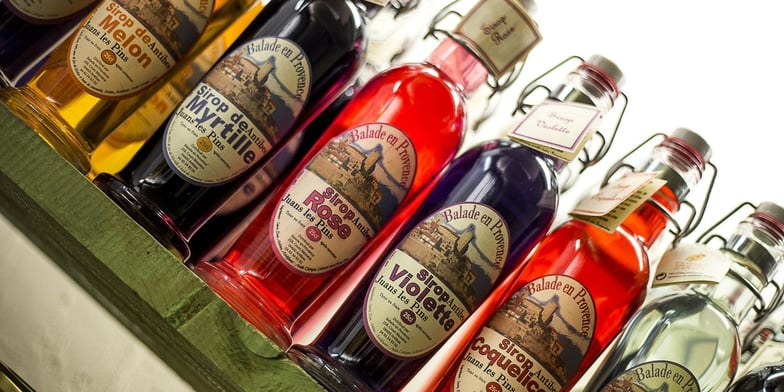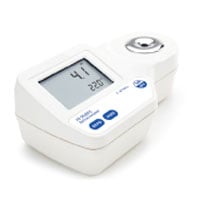
Concentrated syrups are used throughout the food and beverage industry from flavoring coffee to producing soft drinks. The concentration of sucrose not only affects the taste of the final product but also the aroma, shelf life, and potential for bacterial growth. As sucrose is the most common sugar used in syrup products, sugar content is typically reported as percent Brix (% Brix) where one % Brix is equal to 1 gram sucrose per 100 grams of solution.
Coffee is one of the most popular beverages consumed worldwide, and is available in a myriad of varieties and flavors. Coffee can be flavored by enhancing the coffee beans with oils in the roasting stage, or by adding flavored syrup to the finished brew. A coffee shop that brews flavored beans requires many different carafes to hold each type of flavored coffee. Alternatively, if flavored syrups are used, a company simply brews regular roasts and adds the syrup after. Flavored syrups can be added to hot, cold, or specialty beverages, as well as desserts. Using flavored syrups opens up a variety of offerings to customers while also minimizing brewing time and counter space. The risk of carrying flavors over between brews is also decreased.
When producing flavoring aids, sugar syrup is the most expensive and essential ingredient in crafting a quality beverage. Cane, beet, or corn sugar is mixed with treated water to create the sugar syrup, or base, typically around 63% Brix. Flavoring is then added to the base via extracts. Extracts are available as natural or artificial tinctures or powders, or a combination of the two. Fruit juice concentrates are a common example of an extract used to flavor syrup.

A flavored syrup producer contacted Hanna Instruments about measuring the concentration of their base sugar syrups. The customer was gravimetrically calculating the amount of cane sugar to add to hot water in order to obtain sugar syrup of the desired 63% Brix concentration. They were then using a refractometer to measure the heated solution and making the final adjustments from there. In the past, they had used a mechanical refractometer but had difficulty obtaining accurate measurements due to the subjective interpretation and limited accuracy of temperature compensation.
Hanna recommended the Digital Refractometer for Brix Analysis in Foods - HI96801 for food analysis. The HI96801 has a wide measurement range from 0 to 85% Brix with 0.1% Brix resolution and an accuracy of ±0.2% Brix. The customer appreciated that the dual LCD displayed the % Brix as well as the sample temperature from 0 to 80°C (32 to 176°F); the meter also allowed them to achieve temperature compensated readings automatically from 10 to 40°C (50 to 104°F).
The HI96801 also features a stainless steel sample well, which proved much easier to clean than their mechanical refractometer. The quick 1.5 second response time allowed the customer to efficiently perform multiple replicates on each sample, monitoring the homogeneity of the syrup mixture and ensuring the adjustments were based on a representative sample. Overall the HI96801 provided the customer a simple to use and affordable solution to better their quality control process.
As a leader in innovation Hanna Instruments developed the HALO Wireless pH Meter, which uses Bluetooth Smart Technology to connect to Apple and Android devices running the Hanna Lab App.
Continuing with this tradition, the Hanna Instruments Blog is devoted to sharing the latest in product overviews, how-to guides, and industry specific news to our ever-growing audience.
Contact us at sales@hannainst.com.
